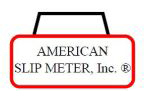Finding Skilled Workers Through Second Chances |
|
| Contributed by Nilda Cintron-Cortez | |
MILWAUKEE -- Many businesses, including contractors, distributors, manufacturers and service providers, struggle to find qualified workers. It’s not unique to any one industry and it’s not an isolated issue that only affects hiring managers, shift supervisors and floor leads. In fact, it’s a problem that can have wide-ranging consequences because a lack of skilled employees can prevent a company from growing and expanding. While there are no “easy buttons,” there are a variety of programs that, when properly implemented, can fill workforce gaps. As Chief People Officer at Sellars Absorbent Materials, a manufacturing company based in Milwaukee, I’m always looking for experienced machine operators, production employees and maintenance personnel. To meet our needs, we have implemented a number of programs that provide on-site and off-site skills training and we’ve established partnerships with nonprofits and government agencies. Three years ago, we became an employer of returning citizens, otherwise known as formerly incarcerated persons. It’s an avenue that some employers might be hesitant to pursue. In our experience, we’ve found it’s highly structured and organized and can deliver benefits to both the employer and employee. In our case, three entities are involved. There’s a temporary employment agency, correctional center and us, the employer. Argus Technical Services, the temp agency we work with, has an established partnership with the Felmers O. Chaney Correctional Center in Milwaukee, which has a work release program for low level offenders. Returning citizens who live at the correctional center are prescreened and approved by the facility, hired by Argus and then placed at Sellars as temporary employees. Like all temporary employees, they must complete 520 work hours before Sellars can extend an offer of full-time employment to them. While living at the correctional center, there’s a strict protocol for their employment. They are driven by correctional staff to and from work. They aren’t allowed to have cell phones and can’t leave the premises, have food delivered or have visitors. As an employer, we’re required to monitor the returning citizens to ensure all the rules and regulations are followed. For us, we’ve found that one of our smaller facilities is the best place to ensure this oversight. Through the work release program, we’ve been able to add five highly skilled employees to our workforce. Each of them has a manufacturing background and a few have college degrees. As an employer, there are significant benefits. During their work release program, these returning citizens want to come to work every day. There aren’t any issues with transportation. They don’t call in sick and they’re never late. They’re respectful and eager to get back into society. They have a strong work ethic, are committed to the manufacturing world and are looking to advance their careers. Once they’ve completed their work hours and meet their release requirements, we get a skilled, dedicated and loyal employee. They, in return, have stability in their life with a consistent position that has opportunities for advancement. As an employer, there are also intangibles that can’t be measured by work hours. Over the years, we’ve seen significant changes in these employees. They become more confident and engaged as they experience more stability. At Sellars, we offer a variety of internal and external training programs so the returning citizens, and all of our employees, are able to grow their skills and increase their pay. Two of our returning citizen employees have already moved up to technician 3 positions. Based on three years of experience, I do have a few words of advice. Make sure the agencies you’re working with have strict criteria for those who are accepted into the work-release program. Fit is still a consideration so make sure they’re team players who will enhance the culture you’ve established. Having an advancement path is very motivating for these individuals who are looking to make up for lost time. Finally, get ready to see a transformation. Returning citizens are grateful for fulfilling employment and, based on the individuals we’ve worked with, they definitely deserve the opportunity for a second chance. They have dreams of getting out of the system, buying a car, owning a home and providing for their families. While it may take some time to set up, it’s a workforce resource that businesses looking for skilled workers should consider investigating because it yields results. Nilda Cintron-Cortez, chief people officer with Sellars Absorbent Materials, is a strategic HR executive with more than 20 years of experience in leadership development and organizational effectiveness. She was instrumental in securing a nearly $400,000 grant from the state of Wisconsin that allowed Sellars to partner with a technical college for a maintenance pre-apprenticeship program. |
|




